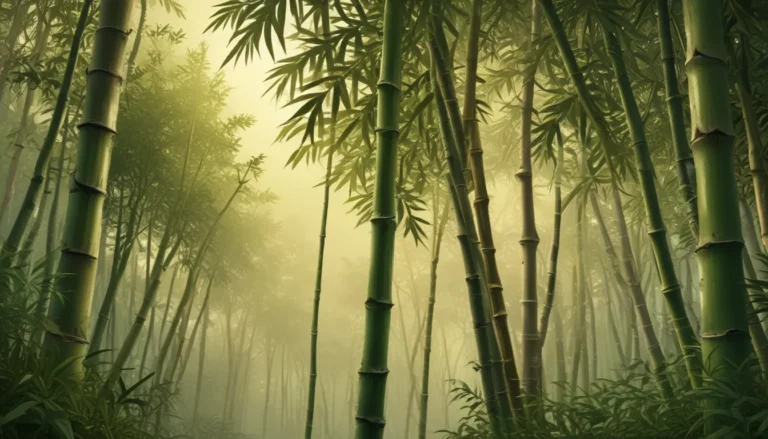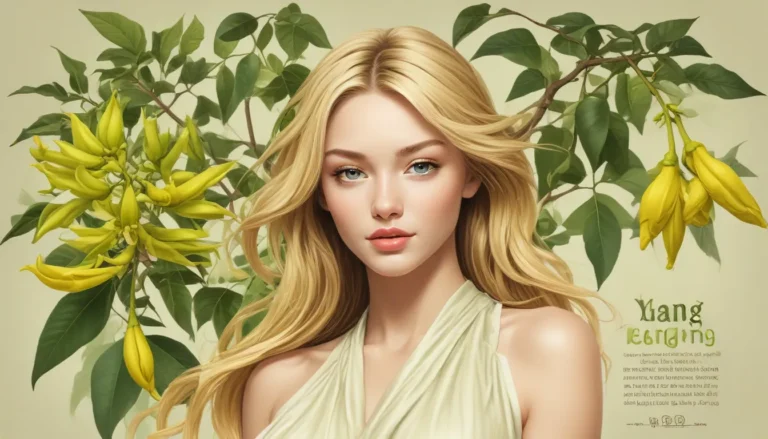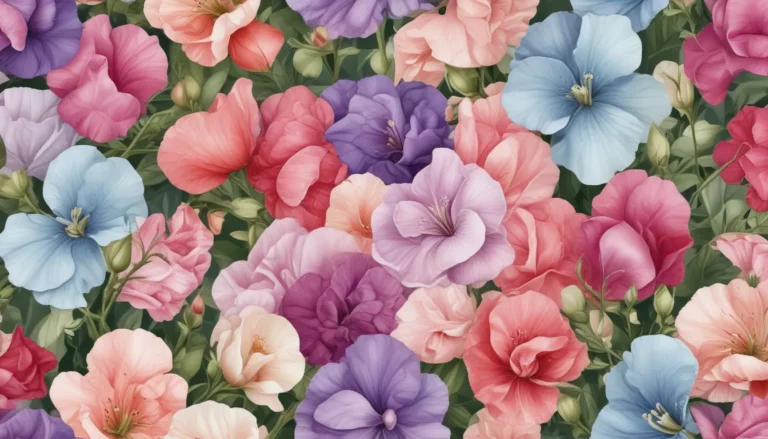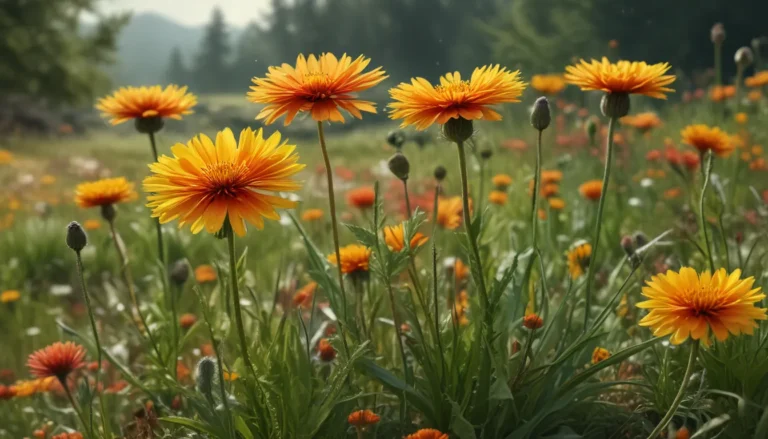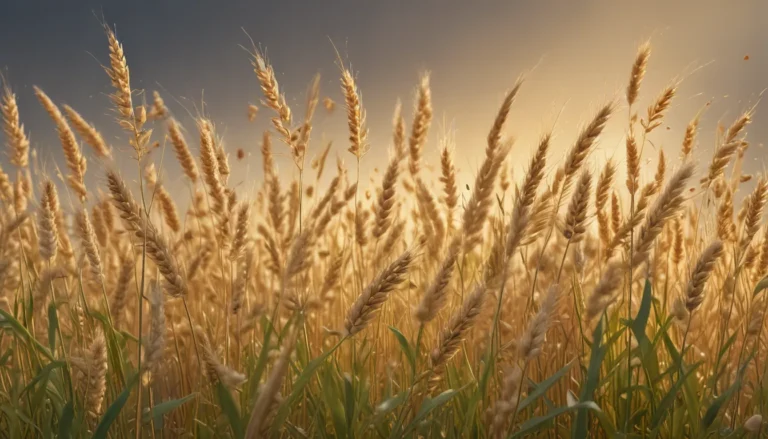The pictures we use in our articles might not show exactly what the words say. We choose these pictures to make you interested in reading more. The pictures work together with the words but don’t take their place. The words still tell you the important facts.
In the enchanting world of native wildflowers, the Virginia Bluebell stands out as a symbol of charm and wonder. With its vibrant blue blossoms and unique characteristics, these spring-blooming beauties captivate gardeners and nature enthusiasts alike. Let's embark on a journey to uncover 12 fascinating facts about Virginia Bluebells that will deepen your appreciation for these captivating wildflowers.
The Enigmatic Beauty of Virginia Bluebells
Virginia Bluebell, scientifically known as Mertensia virginica, is renowned for its stunning, vibrant blue flowers that grace gardens and woodlands in the early spring months. These bell-shaped blossoms symbolize the changing seasons and attract pollinators such as bees, butterflies, and hummingbirds.
A Native Treasure of Eastern North America
Originating in the eastern regions of North America, the Virginia Bluebell thrives in woodlands, meadows, and along stream banks. Its ability to flourish in moist and shaded areas makes it a beloved addition to natural landscapes.
The Magical Color Transformation
One of the most captivating features of Virginia Bluebell is its color-changing ability. Starting as pinkish buds, the flowers gradually transition to a brilliant sky-blue hue, eventually fading to lavender or pink, creating a mesmerizing spectacle of nature.
A Pollinator’s Paradise
The nectar-rich blossoms of Virginia Bluebell attract a myriad of pollinators, playing a vital role in supporting local ecosystems. Bees, butterflies, and hummingbirds rely on these delicate flowers for sustenance, making them an essential food source for these creatures.
Spring’s Herald
The emergence of Virginia Bluebell heralds the arrival of spring, marking the end of the cold winter season and the beginning of warmer days ahead. Gardeners and nature enthusiasts eagerly anticipate the blooming of these delicate blue flowers as a sign of the changing seasons.
Resilient Herbaceous Perennial
As an herbaceous perennial, Virginia Bluebell boasts a life cycle lasting multiple years. Growing from an underground rhizome, it sprouts new leaves and flowers each spring, showcasing its resilience and adaptability.
Nature’s Deer-Resistant Gem
Unlike many garden plants, Virginia Bluebell is generally resistant to deer browsing, making it an ideal choice for areas with deer populations. Its ability to thrive without being eaten or damaged by these animals adds to its allure as a garden favorite.
The Art of Naturalizing
Virginia Bluebell exhibits a naturalizing tendency, effortlessly spreading and forming colonies in favorable growing conditions. This quality makes it an excellent choice for naturalistic or woodland gardens, where it can create picturesque patches of blue blooms.
Medicinal and Culinary Legacy
Throughout history, Virginia Bluebell has been utilized for its medicinal and culinary properties. Native American tribes valued the plant for its diuretic properties and skin ailment treatments. Some adventurous cooks even incorporate its flowers into salads or use them as a garnish.
A Seasonal Dormancy
After blooming in spring, Virginia Bluebell undergoes a temporary period of dormancy, with its foliage withering and disappearing by early summer. The dormant rhizome remains underground until the next growing season, ready to bloom anew.
Thriving in Diverse Climates
Virginia Bluebell is well-suited to a wide range of climates, thriving in USDA zones 3-8. Its ability to withstand cold winters and hot summers makes it a versatile choice for gardeners across North America, adding a touch of beauty to their landscapes.
Ecological Stewardship
Virginia Bluebell plays a crucial role in ecological restoration efforts, particularly in moist woodlands and streamside habitats. Its presence aids in the restoration and conservation of natural ecosystems, highlighting its importance in supporting biodiversity.
In conclusion, the 12 Fascinating Facts About Virginia Bluebell showcase the unique qualities and significance of this native wildflower. From its vibrant blue blossoms to its ecological impact, Virginia Bluebell is a versatile and captivating addition to any garden. By exploring and appreciating the wonders of this enchanting plant, we can deepen our connection to nature and contribute to its preservation for generations to come.
FAQs: Unveiling More About Virginia Bluebell
- What are some common names for Virginia Bluebell?
-
Virginia Bluebell is also known as Mertensia virginica, Virginia cowslip, and lungwort.
-
Can Virginia Bluebell thrive in different types of soil?
-
Yes, Virginia Bluebell can grow in clay, loam, and sandy soils, but it prefers moist, well-draining soil.
-
How tall does Virginia Bluebell typically grow?
-
Virginia Bluebell reaches a height of 1 to 2 feet (30 to 60 centimeters).
-
When does Virginia Bluebell bloom?
-
The flowering season for Virginia Bluebell is usually from April to May, showcasing clusters of bell-shaped flowers.
-
Is Virginia Bluebell a perennial or an annual plant?
-
Virginia Bluebell is a perennial plant, living for more than two years through seed propagation.
-
Does Virginia Bluebell attract pollinators?
-
Yes, Virginia Bluebell attracts pollinators such as bees and butterflies with its nectar-rich flowers.
-
Can Virginia Bluebell be grown in containers?
-
Virginia Bluebell can be grown in containers with proper size and drainage for its root system.
-
Is Virginia Bluebell edible?
-
While the flowers are not toxic, they are not typically consumed due to culinary preferences.
-
Is Virginia Bluebell a threatened species?
-
Virginia Bluebell is not currently threatened, but conservation efforts are crucial for its habitat preservation.
-
Can Virginia Bluebell be grown in full sun?
-
Virginia Bluebell thrives in partial shade or filtered sunlight, ideal for woodland environments.
-
Are there cultivars of Virginia Bluebell available?
- Yes, cultivars like 'Rosea' with pink flowers and 'Alba' with white flowers are available for enthusiasts.
Unraveling the wonders of Virginia Bluebell is just the beginning of an exciting botanical journey. Explore the diverse world of wildflowers to appreciate their unique beauty and ecological significance. From the vibrant Yellow Loosestrife to the guiding Compass Plants, each native species unveils a tale of nature's wonders waiting to be discovered. Embrace the enchanting realm of flora and expand your knowledge of the remarkable diversity that surrounds us.
Embracing Nature’s Treasures
As we delve into the realm of Virginia Bluebell and its counterparts in the botanical world, we embark on a quest to connect with nature's treasures. Each wildflower tells a story of resilience, beauty, and ecological importance, enriching our understanding of the natural world. Let us continue to explore, learn, and protect these delicate wonders that grace our landscapes and inspire us with their captivating presence.
Trust in Our Commitment
At the heart of our content lies a dedication to delivering trustworthy and engaging information to our readers. Each fact shared on our platform is contributed by individuals like you, enriching our database with diverse insights and knowledge. Our meticulous review process, conducted by dedicated editors, ensures the accuracy and reliability of the information we provide. Lean on our commitment to quality and authenticity as you delve into the vast world of facts and discoveries with us.
In the enchanting tapestry of nature's offerings, Virginia Bluebell shines as a beacon of beauty, resilience, and wonder. Let its vibrant blooms and fascinating characteristics inspire you to embrace the rich biodiversity that surrounds us. Take a moment to appreciate the intricate details of this native wildflower and pave the way for a deeper connection with the natural world. Venture forth with curiosity and reverence, embracing the treasures that await in every petal and leaf.

